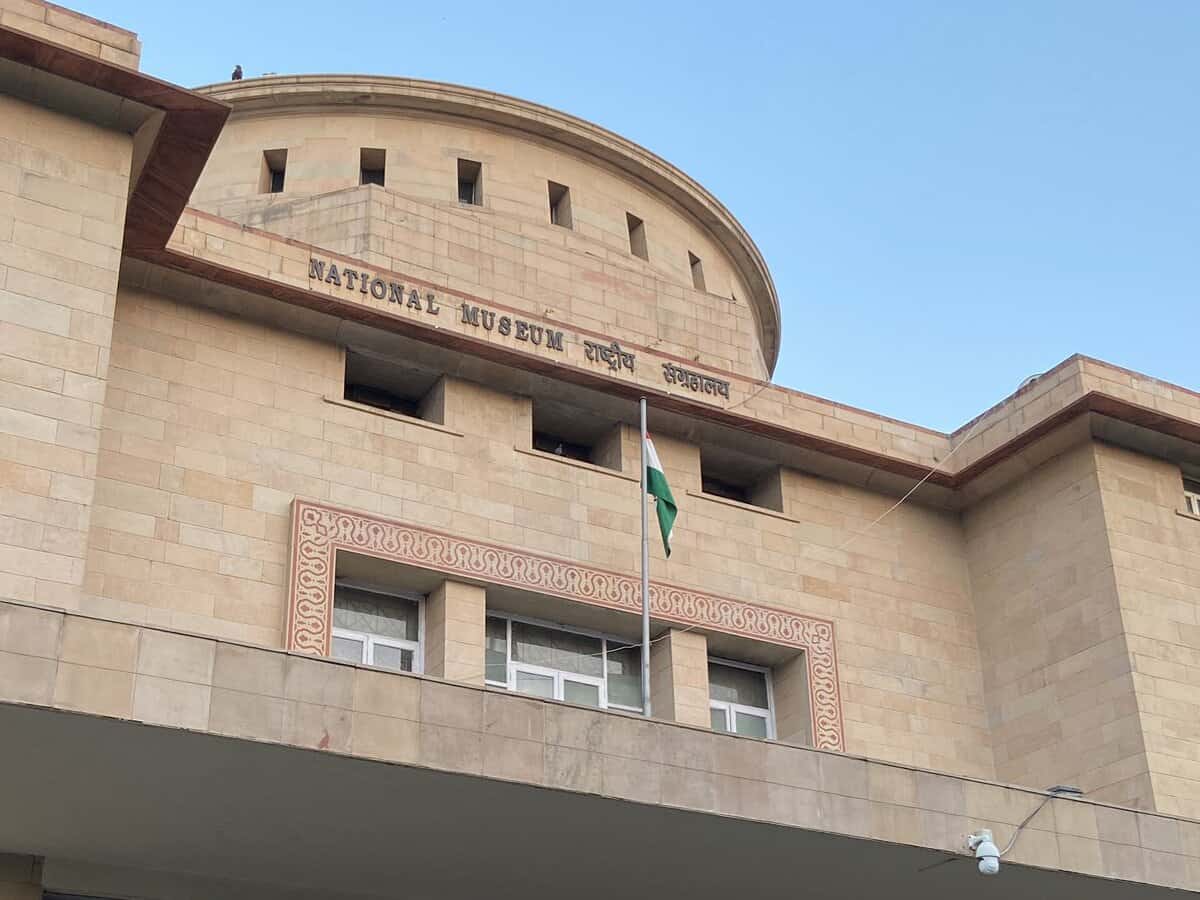
The thought that the National Museum building will be demolished by March next year is itself sad and shocking. The officials in the National Museum itself say that no final decision has been taken yet regarding the demolition of the National Museum but it does figure in the list of buildings to be removed under the plans of the Central Vista renovation project being undertaken at present according to which the New Parliament house building has come up.
The conservationists may question the motive of the government behind demolishing the National Museum, as part of its Central Vista revamp project because it is very much a post Independent India era building to showcase the cultural heritage of the newly formed country.
However, the iconic building represents one of the renowned structures and institutions of the Nehruvian era.
Actually, it was Nehru, a strong votary of museums, who laid the foundation stone of the National Museum on Janpath in May 1955 and at its opening said that museums should be spread throughout the country. “Every city possesses a museum and I would add even villages should have their small museums wherever possible.”
If we want to trace the history of the National Museum its core collection came from the great exhibition of Indian Art (displaying the richest collection of artefacts from private collectors and museums across India at that time) held at Burlington House in London 1947-48.
The National Museum was formally inaugurated by C. Rajagopalachari, the then Governor General of India, on Aug. 15, 1949, and was first housed in Durbar Hall and the state rooms of the Rashtrapati Bhavan.
Looking at all kinds of requirements of a functional museum particularly load bearing capacity due to heavy stone bronze statues, a building was specifically designed and constructed to house the National Museum at Janpath.
The new building was inaugurated by the then Vice president of the country S.Radhakrishnan on Dec. 18, 1960.
The then Minister of Scientific Research and Cultural Affairs Humayun Kabir at the time of the opening of the National Museum had said, “A National Museum must present within the limits of its space and other resources as complete a picture of national life and culture as possible.”
The National Museum is a treasure house of the rarest of rare artefacts from all over the country and showcases the cultural, archaeological, history of India from times immemorial.
The sheer number of artefacts in the holding of National Museum is enormous considered to be about two lakh invaluable pieces of India’s history and a part of not only India’s but the world’s tangible heritage.
To demolish a building that was constructed only for a museum and that too for the National Museum and which had become one of the few well known architectural structures in the capital of India, where people came from all over the world to have a bird’s eye view of the 5,000 year old culture of India, is unthinkable.
The purported idea being to demolish present building and house the artefacts in a museum made out of North and South Blocks, the bureaucratic headquarters of present Indian government and before that of the British government.
The artefacts are national treasures, and one cannot deal with the items casually. Where and how they will be kept till they are housed in a new place is something which has worried and gravely concerned a number of museologists and conservationists.
We are dealing with symbols of India’s history and culture, like the priceless Dancing girl of Mohenjodaro, flying gandharvas of Aihole, Sun God or Surya from the Black Pagoda (Sun temple) of Odisha, holy relics of Lord Buddha, sixth century B.C. coin ‘shatamana’, scrolls and palm leaf manuscripts, the battle axe of Nadir shah and Sword of Tipu Sultan to mention a few.
It is not that the National Museum is the only building that is to be razed to the ground, there are others like the Indira Gandhi National Centre for the Arts (IGNCA), and the National Archives Annexe.
The huge Central Vista project costing Rs. 20,000 crore had new parliament building too as its part which has already come up, and will also have new residences for the Prime Minister and the Vice President.
The other buildings to be demolished also include well known Shastri Bhavan, Krishi Bhavan, Vigyan Bhavan, Vice President’s Residence, Jawahar Bhavan, Nirman Bhavan, Udyog Bhavan, Raksha Bhavan.
Basically have a completely new central vista with new office buildings and VIP residences.
Nobody will deny the fact the new and modern India must have the most modern and sophisticated technologically sound buildings showcasing the new India but one must have these in sync with the old, not by destroying and removing the old. The old buildings do have heritage value and old world charm which must be preserved and accommodated alongwith the new.
The National Archives building will remain unscathed but its annexe building will be axed where lakhs of files and rare manuscripts, maps and historical documents are kept.
It is natural that such a move has had strong reaction from the intellectual and scholarly community of India and some had even written strongly demanding a stop to the project.
If anything these kinds of drastic changes should have had greater involvement and participation of people and stakeholders because you are dealing with the history of India in which every individual in the country has a right of say.
The National Museum is to be demolished by March 2024 and the new museum created at North and South blocks would be known as Yug Yugeen Bharat. The National Museum will virtually get an area four times the present one to display the wealth of National Museum and its huge treasures.
But then the present historical building must not be destroyed and put to some use.
Interestingly, the National Museum building is slated to be demolished even before it is fully completed.
Actually, only two phases of the initial National Museum project of India had been completed till now and the third and final phase was supposed to come up at the area where the head office of the Archaeological Survey of India has its offices next to the National Museum precincts.
Former director general and chairman of the Indian Art History Congress R.S. Choudury had met former Prime Minister Manmohan Singh and regretted that Nehru’s dream had remained unfulfilled.
Conservationists have expressed serious concerns regarding the possible damage to invaluable items kept in the IGNCA, Museum or Archives during any kind of shifting of these buildings. P
The Modi government’s plan is to present the country’s rich history and achievements in a “modern and interesting way” as also having the National Museum at Raisina hill reflect the “nation’s faith in our dynamic democracy and place people at the centre of it.”
Why the present National Museum building built in Nehru era which served for so many years without any problem and a phase of the project still to be completed found unsuitable in Modi’s era?




